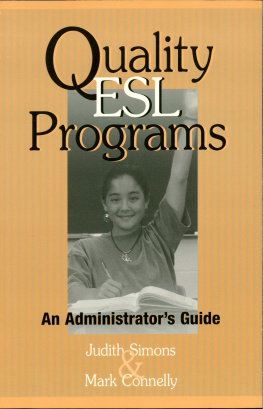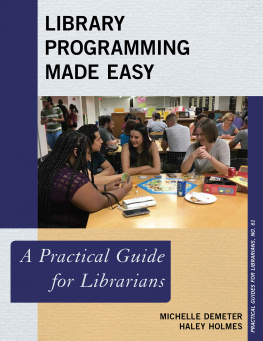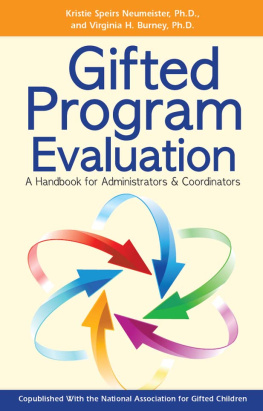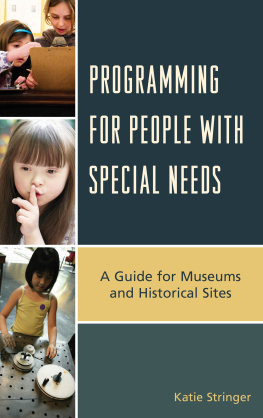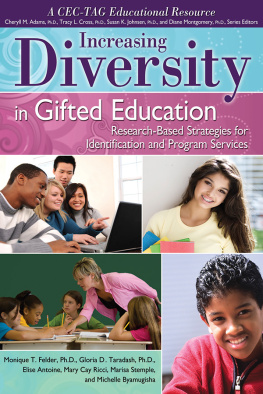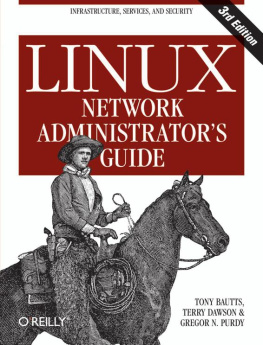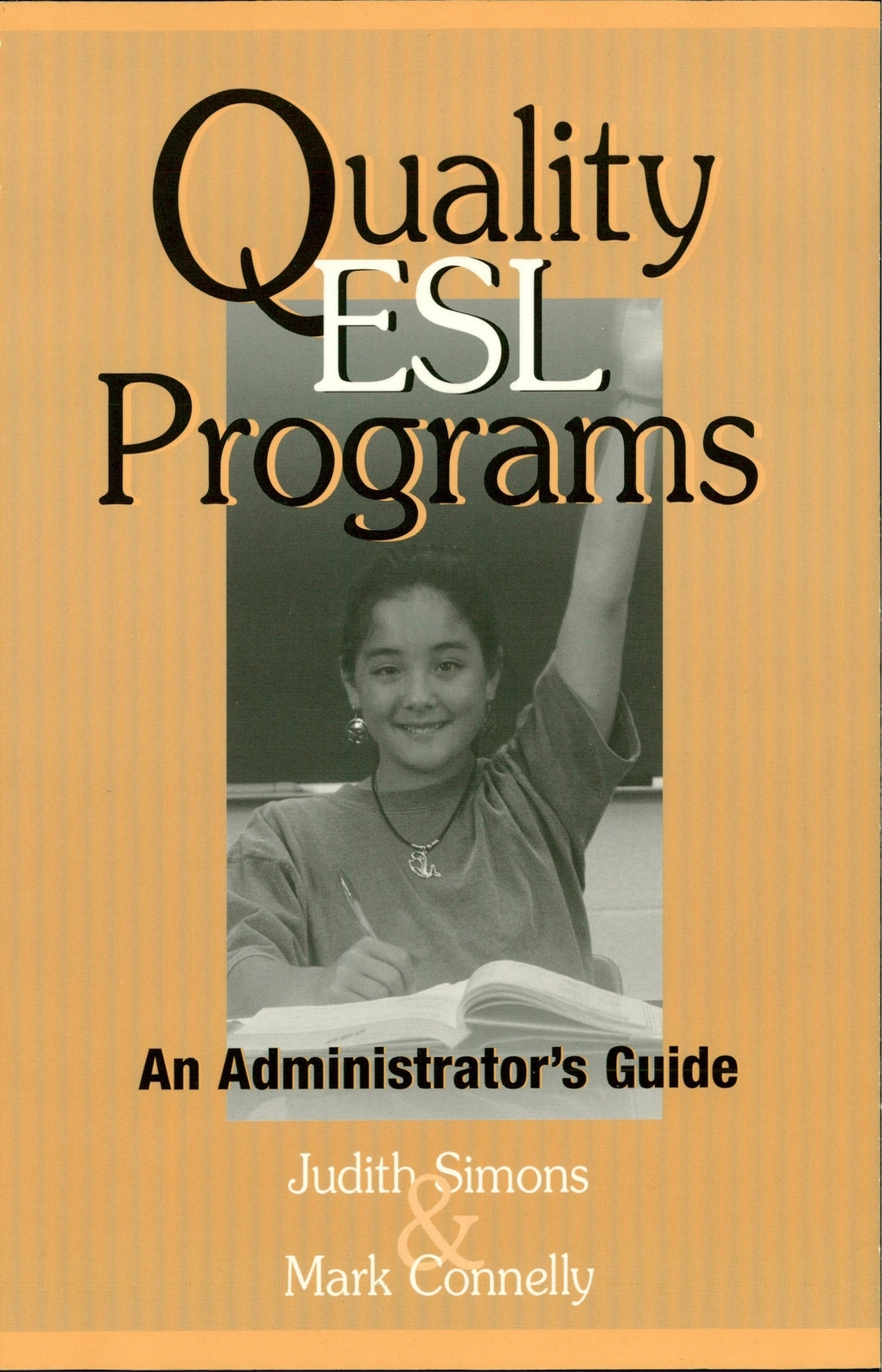Appendix A
Selected Studies and Position Papers Comparing Native-Language Instruction (Bilingual-Education) Programs to Structured-Immersion Programs
Baker, K. (1987). Comment on Willigs A meta-analysis of selected studies on the effectiveness of bilingual education. Review of Educational Reseach, 57, 276282.
Baker, K., & DeKanter, A. (1981). Effectiveness of bilingual education: A review of the literature. Washington, DC: U.S. Dept. of Education, Office of Planning, Budget and Evaluation.
Danoff, M. N., Coles, G.J., McLaughline, D. H., & Reynolds D.J. (1977). Evaluation of the impact of ESEA Tide VII Spanish /English Bilingual Education Programs (Vol. 1, Study Design and interim findings). Palo Alto, CA: American Institute.
Donovan, R. H. & Hodson J. K. (1995). Espanol aumentivo: A transitional bilingual education program for secondary Hispanic preliterates, Evaluation Report, Year IV (ED3888045).
Genesee, F. (1985). Second language learning through immersion: A review of U.S. programs. Review of Educational Research, 55, 541561.
OMalley, J. M. (1978). Review of the evaluation of impact of ESEA Title VII Spanish/English Bilingual Education Programs. Bilingual Resources, 1, 610.
Rossell, C. (1998). Mystery on the bilingual express: A critique of the Thomas and Collier study. READ Perspectives, 2, 6578.
Russell, G., & Woodward, J. (1995). A longitudinal study of transitional and immersion bilingual programs in one district. Elementary School Journal , .
Secada, W. (1987). This is 1987, not 1980: A comment on a comment. Review of Educational Research , , 377384.
Tobias, R. (1994). Education progress of students in bilingual and ESL programs: A longitudinal study, 19901994, OER Report (ED 378817).
Willig, A. (1985). A meta-analysis of selected studies on the effectiveness of bilingual education. Review of Educational Research, 55, 269317.
Willig, A. (1987). Examining bilingual education research through meta-analysis and narrative Review: A response to Baker. Review of Educational Research 57, 362376.
Yates, J. R., & Ortiz, A. A. (1983). Baker and de Kanter review: Inappropriate conclusions of the efficacy of bilingual education. NABE Journal, 7, 377384.
Appendix B
State-by-State Contact Person and Program Mandates for ESOL Students
| Contact Person | Program Mandates |
|---|
| Alabama |
| Diane Courtney | No Mandate |
| (334) 242-9700 |
| Alaska |
| Anne Kessler | Bilingual/bicultural education. Mandate for districts with 8 or more LEP students, students who are English proficient but speak another language. Districts may apply for waiver. |
| (907) 465-8716 |
| Arizona |
| Nancy Mendoza | All schools must provide either bilingual or ESL programs for all LEP students. |
| (602) 542-3204 |
| Arkansas |
| Andre Guerro | No mandate. State requires all courses be taught in English, but school districts may establish ESL programs. |
| (501) 682-4213 |
| California |
| Leroy Hamm | Schools having at least 10 LEP students who speak one language must provide a program. |
| (916) 657-3699 |
| Colorado |
| Dr. Roger Martinez | All instruction must be conducted in English, except LEP transitional programs, which may be ESL or bilingual. |
| (303) 866-6771 |
| Connecticut |
| George DeGeorge | Any school or school district with 20 or more LEP students who speak a single language must provide a bilingual program. Three-year limit on TBE programs. |
| (860) 566-2169 |
| Delaware |
| Sister Margie Loveland | No statute or regulations. By law, English is the only language of instruction. |
| (302) 739-2770 |
| Florida |
| Bernardo A. Garcia | Either an ESL or bilingual program must be provided if15 students speak the same language in a school. |
| (904) 487-4495 |
| Georgia |
| Beth Arnow | Schools must provide programs for LEP students designed to develop English skills and American culture concepts for participation in regular classroom instruction. |
| (404) 656-4495 |
| Hawaii |
| Dr. Alan Ramos | Both ESL and bilingual education programs are allowed. |
| (808) 733-4495 |
| Idaho |
| Irene Chavolla | English required as language of instruction, but transitional programs may be provided for children who do not speak English at home. A consent decree requires a uniform, comprehensive, and appropriate program statewide. |
| (208) 332-6907 |
| Illinois |
| Rene Valenciano | All students must be served by either a transitional bilingual education program or a transitional program. Any school that has 20 or more students who speak one language must have a TBE program. Any school with fewer than 20 students speaking a single language must have a transitional program. |
| (314) 814-3986 |
| Indiana |
| Darlene Slaby | School districts must provide bilingual/ bicultural programs for students whose L1 is not English, who speak another language more often than English, or who live in a home where the language spoken most often is not English. Program goal is to assist students in reaching their full academic achievement and to preserve awareness of cultural and linguistic heritage. |
| (317) 232-0555 |
| Iowa |
| Dan Chavez | No mandate. Code allows for TBE and/or ESL programs. |
| (515) 281-3805 |
| Kansas |
| Kimberley Kreiker | Schools required to establish program for LEP students that integrates them into regular educational programs. Schools may enter into a small multidistrict arrangement to share program costs. |
| (913) 296-7929 |
| Kentucky |
| Nancy LaCount | No statutes or regulations. |
| (502) 564-2672 |
| Louisiana |
| Sally M. Tyler | No statutes or regulations. |
| (504) 342-3454 |
| Maine |
| Dr. Barney Berube | State law requires English as the language of instruction, but permits bilingual or ESL programs for LEP students. |
| (207) 287-5984 |
| Maryland |
| Jill Bayse | State law establishes guidelines for creating both bilingual and ESL programs. Each school must establish one of the two for LEP students. |
| (410) 767-0344 |
| Massachusetts |
| Tony Delorenzo | Any school district with 20 or more LEP students at any grade level of a particular language group must offer a TBE program. BE programs may include English-proficient students. Multigrade classrooms with up to a 4-year age spread are permitted. Districts may petition to waive this requirement due to hardship. |
| (617) 388-3300 |
| Michigan |
| Jesus Solis | Schools required to provide ESL or bilingual programs, but only bilingual programs receive funding. |
| (517) 373-4580 |
| Minnesota |
| Joyce Biagini | State does not require bilingual or ESL programs, but any district with either program is required to prevent LEP student isolation for any substantial part of school day, and to facilitate integration into nonverbal subjects such as art, music, and PE. |

